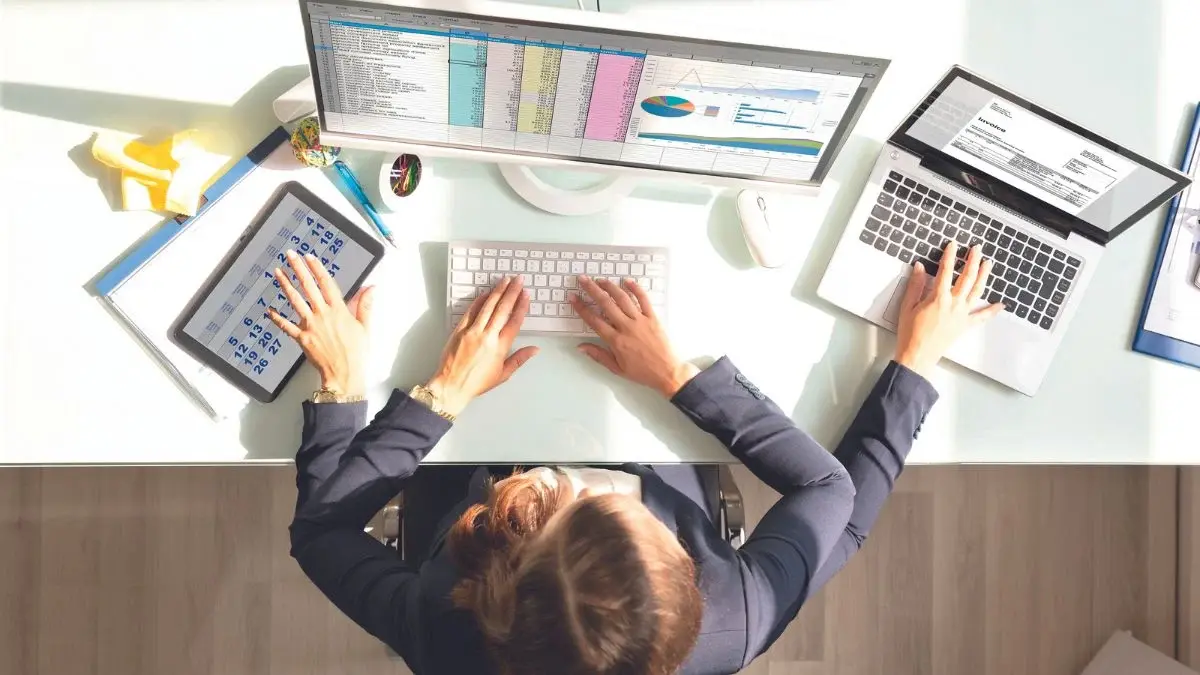· Karen Cervantes · coworking · 5 min read
Boost your productivity without compromising your well-being
Want to be more productive without turning into a zombie? Here’s how to make it happen

We live in a world where it always feels like we have to do more in less time, and productivity often ends up meaning working all day and feeling drained. But what if you could be more productive without sacrificing your well-being? Here are some simple habits that can help you get more done without losing your balance or energy. Because being productive doesn’t have to mean being exhausted.
The importance of breaks

Stress reduction: Constant work can lead to high levels of stress, affecting both mental and physical health. Breaks provide a much-needed pause to ease tension, reduce anxiety, and relieve work pressure. By taking time to relax, people are better able to handle the demands of their job and maintain a healthier emotional balance.
Better physical health: Breaks are also key to preventing physical issues caused by prolonged sitting, constant computer use, or repetitive tasks. Without pauses, you could develop problems like back, neck, or wrist pain, eye strain, and musculoskeletal disorders. Taking short breaks throughout the day, like walking or stretching, helps relieve muscle tension and prevent long-term health issues.
Boosting creativity and problem-solving: When we work non-stop, our brains get overwhelmed, making it harder to be creative and solve complex problems. Breaks give our minds a chance to temporarily disconnect from work, which helps clear mental clutter and sparks creativity.
Better work environment: Taking proper breaks not only benefits the individual, but also improves the overall work atmosphere. Employees who have time to rest are less irritable and more willing to collaborate and communicate effectively with their coworkers. This helps create a positive and cooperative work environment, which is crucial for organizational success.
Strategies to disconnect from work

Disconnecting from work is crucial for maintaining a healthy work-life balance and avoiding burnout or stress. Here are some strategies that can help you achieve this:
Set fixed work hours
Establish a clear start and end time for your workday. Once your work hours are over, try to avoid checking emails or responding to work-related messages. This helps set boundaries.
If you work from home, create a physical space dedicated solely to work. When you leave that space, it’s easier to “disconnect” from work.
Use technology to your advantage
Make use of time management apps like timers or apps that block access to work platforms outside of your set hours, helping you resist the temptation to keep working.
Engage in physical activities
Exercise is a great way to release tension and boost your mood. Whether it’s a walk, yoga, running, or playing sports, exercise helps clear your mind and reduce stress.
If you spend a lot of time sitting, include active breaks to stretch and move your body. This improves circulation and focus.
By implementing these strategies, you’ll enjoy a true break, reduce stress, and maintain physical and emotional well-being that will benefit both your personal life and professional performance.
Productivity techniques

There are several productivity techniques you can use to manage your time better, boost your focus, and work more efficiently. Here are some of the most effective ones:
-
Pomodoro Technique: The Pomodoro Technique involves working in 25-minute intervals, followed by a short 5-minute break. After completing four work blocks (or “pomodoros”), you take a longer break of 15 to 30 minutes. It helps maintain focus, reduces mental fatigue, and creates a sense of urgency, which can boost productivity.
-
Minute Rule (David Allen): If a task can be completed in 2 minutes or less, do it right away. The idea is to prevent small tasks from piling up, which can cause distractions or overwhelm. It helps prevent procrastination and keeps tasks under control without letting them accumulate.
-
Top 3 Priorities Technique: At the start of your day or week, choose the three most important or impactful tasks you need to complete. This helps you focus on what truly moves your agenda forward. By concentrating your energy on high-impact tasks, you avoid getting distracted by the sheer number of things you might need to do.
-
Batching Technique: This involves grouping similar tasks together and completing them in one block of time. For example, you can group all tasks related to email—like checking and responding to messages—into one specific block during the day. It helps minimize distractions and reduces the time lost when switching between different types of tasks.
-
Eisenhower Matrix (Urgent vs. Important): The Eisenhower Matrix divides tasks into four categories:
-
Urgent and Important (Do now)
-
Not Urgent, but Important (Plan to do)
-
Urgent, but Not Important (Delegate)
-
Neither Urgent nor Important (Eliminate or Postpone)
-
It helps prioritize tasks based on their impact and urgency, preventing urgent tasks from taking up more time than necessary.

In short, productivity shouldn’t be a goal in itself, but rather a tool to live better. True success isn’t just about what you accomplish, but how you do it, without compromising your well-being. Being productive doesn’t mean being busy all the time; it’s about finding ways to work more efficiently while taking care of your body, mind, and emotions. Setting boundaries, taking breaks, prioritizing rest, and focusing on what truly matters are key to sustainable productivity. Ultimately, it’s about finding a balance that allows you to move towards your goals without losing the enjoyment of the journey. Conscious productivity is the kind that recognizes well-being as the foundation of everything else, and when you focus on it, goals come more naturally and satisfyingly.